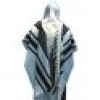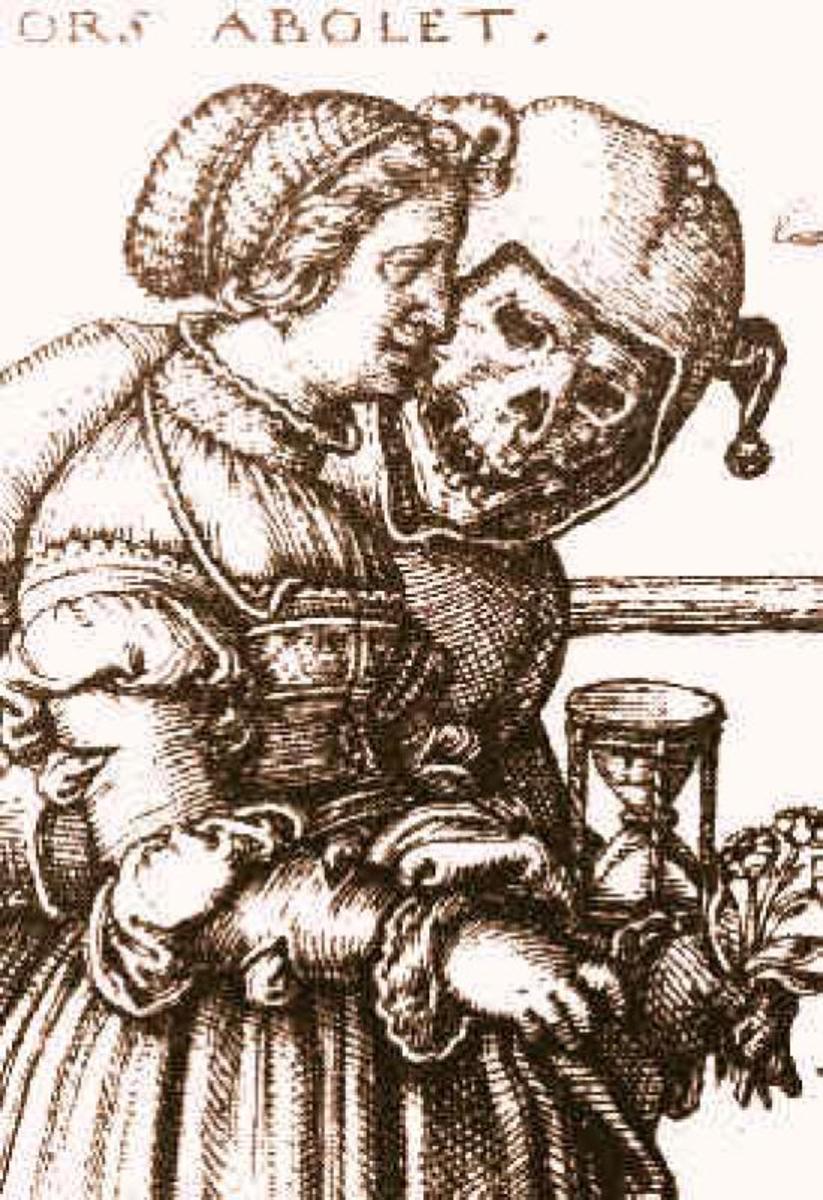Insights to Parshat Vayeira (Appeared)
Parshat Vayeira (Appeared)
In this parsha (section) of Torah it opens in Genesis verse 18:1 and it states, “And HaShem appeared to him in the plains of Mamre while he was sitting at the entrances of the tent in the heat of the day.” It is known in Judaism that this was the third day after Avraham had his Brit Milah (Covenant of Circumcision). This would have been the height of his pain during his recovery. This leaves me with a question, how did HaShem appear to Avraham, was it a vision, a dream, or a manifestation? To answer this we have to look at another part of scripture, and there is a part of scripture where HaShem is speaking to Aharon (Aaron) and Miriam (Mary) the siblings of Moshe (Moses) and HaShem says, and I paraphrase, that HaShem speaks to the prophet through dreams and visions but to Moshe, HaShem speaks face to face. Therefore, HaShem would not have appeared to Avraham in a manifestation.
The next question is unanswerable at my level of knowledge. What was the conversation about? Rashi suggests that HaShem was inquiring to the recovery of Avraham. However, HaShem would not have to inquire because He is Omniscient (all knowing), so it leaves the impression that it is a teaching for man to visit the sick.
In verse 18:5 it says in Hebrew “V’Sa’adu leb’chem” which translates as nourish your heart. The full context of the verse says, “I will fetch a morsel of bread that you may nourish your heart” it can also be translated as and fed your heart. The word for heart is Lev or leb depending on the grammar. It is a two letter Hebrew word “LB”, the lamed or “L” sound is used to say “to” or “for” and the second letter is Beit or “B” which would mean house. So fed your heart can mean feed your house. Often times in scripture the word bread refers to Torah as well. So from this choice of words we see what the great sages of the Talmud say when they say “Ein Kamech, Ein Torah, Yesh Kamech, Yesh Torah”, which means “there is no flour without Torah, and there is no Torah without Flour”.
Verse 18:14 says, “Is anything beyond Hashem? At this appointed time I will return to you at this time next year, there will be life; and Sarah will have a son.” This verse starts off with a fun word; in Hebrew it says “H’ayipaley”. The translation would be does not HaShem make miracles of a thing. The obvious answer is that it is not beyond HaShem to make miracles. Translating with different possibilities strengthens the perspective of the story and I think it paints a clearer picture for the readers.
In the Hebrew language the word for fear and see are very similar, context and grammar helps the translator determine the most appropriate word. In verse 18:15 it says that Sarah was frightened when she spoke to the Angel that confronted her about laughing at the situation. It could have said that she saw it, the question would then be she saw what? This term in Hebrew means respect as well. The concept is when someone sees something, they respect something. In other words when I was a Paratrooper I saw the way that parachutes were packed, I saw how the Air Force loaded up the Paratroopers on the plane. I saw the power of the plane; I saw the doors open up as Paratroopers stood in anticipation to jump out of the plane. I understood, and I feared. I did not shake in my boots, cry or panic. I understood the severity of the situation and I respected it. The same is here, I believe that when she was frightened, that really the angel showed her something, maybe a vision, and she understood and respected the situation. This goes with the fact that the Angel said to her, “No you laughed”, and that was the end point to the conversation.
Verse 18:19 says, “For I have cherished him, because he commands his children and his household after him that they keep the way of HaShem, doing charity and justice, in order that HaShem might bring upon Avraham that which He had spoken of him.” This does not start off with the words cherished; I do not understand why the translators choose this word. The beginning of this verse starts of saying, “Ki y’da’tiv” which is to say because I knew him. This is very strong because there are to verbs for “to know” in Hebrew which are Machir and Yodeah. Machir means acquaintance with something and Yodeah means intimate knowledge. I would say Machir if I am talking about a friend at work, I know John, however the word Yodeah is reserved for man an wife like in Genesis where it says, and Adam knew his wife and behold she conceived. It is a very intimate knowledge. Maybe out of modesty it was translated as cherished. I think because I knew him is very appropriate because we are taking about HaShem that knows every hair on my head, so off course HaShem knows everything else as well.
We see that there are three Angels that show up to Avraham’s tent which according to some thought they are the three Angels Raphael, Michael, and Gavriel. We see that later in verse 19:1 that two went down to Sodom and Gomorrah. Where is the other one? This is my theory. Raphael means “G-d heals”, so I think that this Angel stayed with Avraham to help him heal from his Brit Milah (Circumcision). The other two went down to Sodom and Gemorrah. In the book of Yechezkiel (Ezekiel) it says that there was two angels that went through Jerusalem and one marked the forehead of the people who were judged to die and the other one slew those that were marked. Gavriel mean “Mighty of G-d” is identified with this story in Yechezkiel. Gavriel destroyed those marked with fire, he is known as the angel of fire. So it would be the angel to send to rain down the fire and brimstone on Sodom and Gomorrah. All three are Archangels and all three would probably been involved in this story. Micheal is the protector of Israel, and therefore he would have been there for Avraham’s behave since this property was destined to belong to Avraham from the blessing that HaShem gave Avraham (refer to verse 18:17).
In verse 18:23 it says, and Avraham was still standing before HaShem. In Hebrew it says, “Oddenu Omed lifnei HaShem” The word Od and the word Ed are spelt the same way in the Hebrew language. Od means “still” and Ed means “witness”, and so a possible play on words here would suggest that an Avraham was witnessing and standing before HaShem. Meaning that he was probably testifying to HaShem and people in Sodom and Gomorrah, as we see right after this that Avraham negotiates to with HaShem to spare Sodom and Gomorrah.
Verse 19:1 says, “And Lot sat in the gates of Sodom”. This is an idiomatic phrase that means that he was sitting in a place of Judgment. Before HaShem was going to destroy Nineveh in Assyria he sent Yonah (Jonah) to call them to repentance. I do not know if Lot knew what he was doing, or if Lot did not know, however if Avraham was witnessing and standing before HaShem as mentioned previously than maybe Avraham had hoped that helped convert some of the inhabitants. After all, Lot did know HaShem and he had to learn a lot from his uncle along their journeys.
The story goes on to say that the men from old to young was so perverted with homosexuality that they tried to smash the door down. Lot offers them his two virgin daughters to test them, but they were so perverse they wanted the Angels that Lot was protecting. By the way Lot had more sons and daughters but they were all married off with the inhabitants of the city and none of them heeded the warning of Lot and the Angels.
Then Lot and his wife escaped to the nearby city of Zoar in verse 19:26. They were safe in this city before the destruction of Sodom and Gomorrah started. They were not running which is what a lot of people think. It says in verse 19:26 that “And his wife peered from behind him and she became a pillar of salt.” She did not turn back, a definitely not while escaping. However, the end result is the same.
This Parsha like most parshas in Genesis are so rich with Hebraic idoms, and ancient culture and depth that goes beyond a superficiel reading. Each time I read about the stories in Genesis new words pop out for Exegesis. I encourage everyone to read the stories and then read them again. Each time ask new questions about how the words are stated, or the questions asked. If you have a question, leave one for me, or look up AskMoses.com, or Chabad.org, there are several resources to learn great insights to Genesis from a Hebrew perspective that corresponds to the words of Torah.






